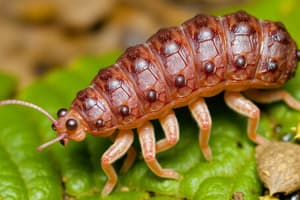Podcast
Questions and Answers
Match the types of values in a Chi-squared test with their descriptions:
Match the types of values in a Chi-squared test with their descriptions:
Observed values = Actual data from the experiment Expected values = Theoretical data based on the null hypothesis Calculated values = Results from the Chi-squared equation Critical values = Values from the Chi-squared distribution table
Match the components of a Chi-squared test with their purposes:
Match the components of a Chi-squared test with their purposes:
Degrees of freedom = Determines the number of rows and columns Chi-squared value = Compares to the critical value for significance Null hypothesis = States there is no association between variables Alternative hypothesis = States there is an association between variables
Match the steps in a Chi-squared test with their descriptions:
Match the steps in a Chi-squared test with their descriptions:
Calculate the Chi-squared value = Using the observed and expected values Determine the degrees of freedom = Calculating rows and columns minus one Compare to the critical value = Using the Chi-squared distribution table Reject or fail to reject the null hypothesis = Based on the Chi-squared value and critical value
Match the concepts in a Chi-squared test with their definitions:
Match the concepts in a Chi-squared test with their definitions:
Match the Chi-squared test results with their conclusions:
Match the Chi-squared test results with their conclusions:
Match the types of errors in a Chi-squared test with their descriptions:
Match the types of errors in a Chi-squared test with their descriptions:
Match the Chi-squared test assumptions with their descriptions:
Match the Chi-squared test assumptions with their descriptions:
Match the Chi-squared test applications with their descriptions:
Match the Chi-squared test applications with their descriptions:
Match the Chi-squared test statistics with their formulas:
Match the Chi-squared test statistics with their formulas:
Match the conclusions of a Chi-squared test with their interpretations:
Match the conclusions of a Chi-squared test with their interpretations:
Match the Chi-squared test limitations with their descriptions:
Match the Chi-squared test limitations with their descriptions:
Study Notes
Population Dynamics
- Population growth curves can be modeled using sigmoid curves, which show an initial phase of rapid growth, followed by a plateau as the population reaches its carrying capacity.
- Carrying capacity is the maximum population size that an environment can support, and is influenced by density-dependent factors such as competition for limited resources, predation, and disease.
- Density-independent factors, such as natural disasters, can also affect population growth.
Modeling Population Growth
- Exponential growth occurs in the initial phases of population growth, but is eventually limited by density-dependent factors.
- The sigmoid growth curve can be modeled using a graph with a logarithmic scale for population size and a non-logarithmic scale for time.
Communities and Ecosystems
- A community consists of all the interacting populations in an ecosystem, including plants, animals, fungi, and bacteria.
- Intraspecific competition occurs between individuals of the same population, while interspecific competition occurs between different populations.
- Mutualism is a type of interspecific relationship where both species benefit, such as in the relationship between Rhizobium bacteria and legume plants.
Estimating Population Size
- The Lincoln Index can be used to estimate population size using capture-mark-release-recapture data.
- The formula for the Lincoln Index is:
N = (n1 * n2) / n3, wheren1is the number of individuals marked and released,n2is the number of individuals recaptured, andn3is the number of marked individuals recaptured.
Interspecific Relationships
- Mutualism: Rhizobium bacteria and legume plants have a mutualistic relationship where the bacteria fix nitrogen for the plant, and the plant provides the bacteria with carbohydrates.
- Mycorrhizae: fungi form symbiotic relationships with plant roots, providing nutrients in exchange for carbohydrates.
- Zooxanthellae: coral polyps have a mutualistic relationship with algae that provide nutrients.
Competition for Resources
- Invasive species can outcompete endemic species for resources, leading to a decrease in population size.
- Examples of invasive species include Japanese Knotweed, Box-tree caterpillar, and Himalayan Balsam.
Testing for Association
- The Chi-squared test can be used to test for association between two species.
- The test calculates the expected frequencies of each combination of species, and compares them to the observed frequencies.
- If the calculated Chi-squared value is greater than the critical value, the null hypothesis of no association is rejected.
Studying That Suits You
Use AI to generate personalized quizzes and flashcards to suit your learning preferences.
Description
This quiz covers the concepts of density-independent and density-dependent factors that affect population growth, including competition for limited resources and negative feedback control of population size.



